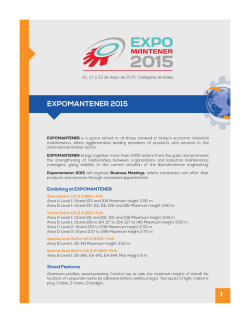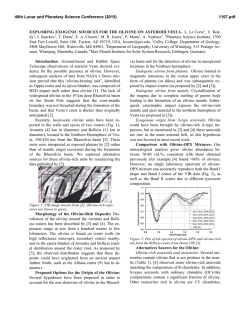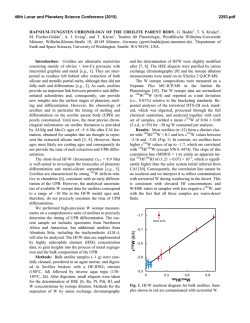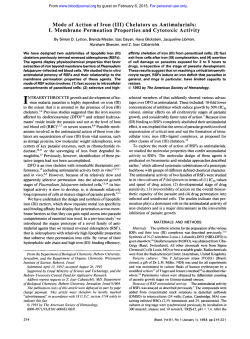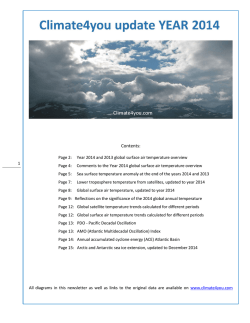
Nucleosynthetic Anomalies in Palladium from IAB, IVA, and IVB Iron
46th Lunar and Planetary Science Conference (2015) 1265.pdf NUCLEOSYNTHETIC ANOMALIES IN PALLADIUM FROM IAB, IVA, AND IVB IRON METEORITES. B. Mayer1 and M. Humayun1, 1National High Magnetic Field Laboratory & Dept. of Earth, Ocean & Atmospheric Science, Florida State University, Tallahassee, FL 32310, USA ([email protected]) Introduction: Nucleosynthetic anomalies have been reported in Mo and Ru from bulk chondrites, achondrites and irons [1,2], but are either more limited in W [3,4,5] or absent in Os [5,6]. The origin of these anomalies may represent spatial and/or temporal heterogeneity in the sources that supplied material to the nascent solar nebula, and/or may have been enhanced by chemical processing within the solar nebula [e.g. 7,8]. Palladium is a siderophile element but, in contrast to the refractory siderophile elements studied for isotopic anomalies (Mo, Ru, W, Os), Pd is not refractory during nebular processing. We have previously reported Pd isotopic compositions of IVB iron meteorites [9,10] that demonstrated clear cosmogenic effects in ε104Pd and distinct nucleosynthetic anomalies in ε104Pd and ε110Pd [10]. Here, we present new precise Pd isotope ratio measurements of IAB, IVA (Gibeon) and IVB iron meteorites to extend our previous work. Analytical Methodology: For Pd isotopic composition analyses samples from 7 IVB meteorites (new: Kokomo, Hoba, Santa Clara, and Tawallah Valley; Duplicate: Skookum, Warburton-Range, Dumont [10]), 3 IAB meteorites (Toluca, Canyon Diabolo, Campo del Cielo) and Gibeon (IVA) were freshly cut and polished, then dissolved in aqua regia. The iron matrix (cation column) and isobaric and molecular interferences (Zn, Zr, Mo, Ru, Cd etc.) were removed with cation and anion exchange column chemistry [15]. All Pd-isotopic compositions were analyzed on the Thermo Neptune™ MC-ICP-MS (at the NHMFL, Tallahassee) in 100 ng/mL aliquots in 2% HCl. The 7 IVB iron meteorites were measured with an ESI SIS™ or APEX™ sample introduction system in low resolution and static mode. Later measurements of the IAB and IVA during a separate session were made with a CETAC Aridus™ sample introduction system in medium resolution in static mode. The measurements were made with Thermo SuperJet8.2 Ni and Spectron T1001 Ni-X skimmer cones. All Pd isotope ratios were normalized to 108Pd/105Pd 1.18899 [14] using the exponential law for mass bias correction. All data are given in epsilon notation as deviation from the reference material, an Alfa Aesar High Purity Pd Standard. Possible minor isobaric interferences from Ru (101Ru) and Cd (111Cd) were simultaneously monitored on the MC-ICP-MS. To establish the purity of the Pd cuts and to monitor possible interferences, all samples were analyzed with an ICP-MS (Thermo Element2TM or Element XRTM) prior to measurement on the MC-ICP-MS. Results: New results are shown in Fig. 1, 2, and 3. Palladium isotopic anomalies have been confirmed in the IVB iron meteorites consistent with previous results from this lab [15]. A Pd isotopic anomaly is now reported for Gibeon (IVA), whereas isotopic anomalies in the 3 IAB irons are not resolved from the terrestrial standard within current precision. Typical within session reproducibility of the terrestrial standard for ε104Pd, ε106Pd, and ε110Pd was ± 0.1, ±0.05, and ±0.1 εu (2σ of the mean), respectively. IVB iron meteorites. The new IVB iron meteorites show a uniform ε110Pd anomaly around +0.5 εu, with ε106Pd not resolvable from 0.0 εu. Between the different IVB iron meteorites a variability in the ε104Pd is clearly resolvable (Warburton Range: -0.44 to Kokomo: +0.40 εu) which is attributed to GCR effects (see discussion below). IAB iron meteorites. The 3 IAB iron meteorites exhibit uniform values for ε104Pd, ε106Pd, and ε110Pd of 0.1, 0.0, and +0.1εu, respectively, but are not resolved from the terrestrial standard by more than 2σmean (using all three ΙΑΒ). No resolvable variability within the 3 IAB on ε104Pd has been found here. Gibeon (IVA). Unfortunately, this sample tended to clog the nebulizer by the end of the measurement runs due to possible organic contamination in the solution. Therefore, these results are still preliminary. In the Gibeon iron meteorite, a positive ε110Pd anomaly of +0.3 and a negative ε104Pd anomaly of -0.2 εu is resolved from the terrestrial standard while ε106Pd at -0.09 εu is not resolvable from the terrestrial standard. Discussion: Cosmogenic effects. Cosmogenic neutron capture in iron meteorites causes the burning of 103 Rh (highest thermal neutron cross section in the mass region A=92-110 [11,12]) resulting in an excess in 104 Pd. This can mask any nucleosynthetic effect on the s-process only isotope (104Pd, [13]) of Pd while the rprocess only isotope 110Pd [13] has no observable cosmogenic effects. The variable anomalies in the IVB iron meteorites are well correlated with another in-situ neutron dosimeter based on ε192Pt (Fig.1) (burning of 191Ir and resulting excess in 192Pt) [3,5,12]. After GCR damage corrections (Fig.1) an initial anomaly in ε104Pd of 0.5 εu is resolvable which is lower than the reported anomaly in a previous study [10] due to more samples which have less GCR damage and, thus, the regression line is constrained more precisely. The 3 IAB iron metorites show no variability in ε104Pd. 46th Lunar and Planetary Science Conference (2015) Fig. 1: Comparison of ε104Pd and the in-situ neutron dosimeter ε192Pt measured on the same samples of IVB iron meteorites [5]. Black squares represent individual measurements of IVB iron meteorites (this study) and open triangles IVB iron meteorites from previous study [10]. Dashed black line represent modeled effects of GCR reactions for iron meteorites [10,12]. Fig. 2: Nucleosynthetic anomalies in Pd in different iron meteorite groups with 2σmean errors. Note that only the ε104Pd of IVB iron meteorties has been GCR corrected. Black solid line predicts effects on ε104Pd and ε110Pd based on an s-process deficit [13]. Nucleosynthetic effects. The GCR corrected ε104Pd anomaly in the IVB iron meteorites as well as the positive ε110Pd anomaly is attributed to an s-process deficit (Fig. 2). Similar nucleosynthetic anomalies are also observed in other elements, like Ru, Mo, and W [1-5] but not found in Os [5,6]. Ruthenium and Mo show similar s-process deficits implying a common host phase [e.g. 7]. If the same carrier was also a host for Pd this would have yielded a s-process deficit in ε104Pd of -1.0 εu and an excess in ε110Pd around +1.0 εu [13]. The observed anomalies, though, are only half of what would be predicted assuming a common carrier for Ru, Mo, and Pd (Fig. 3). This discrepancy is most likely due to a different host of the Pd anomalies than of Ru and Mo anomalies. A possible carrier might be a metal phase hosting 1265.pdf Pd and part of the isotopically anomalous budgets of Mo and Ru. Since Pd is not known to form carbides nor found in SiC [15] in contrast to Mo and Ru, the known presolar grains are not likely carriers of the Pd isotope anomaly. Thus, physical or chemical processing of SiC in the nebula cannot affect the Pd isotope composition but may enhance the effects in Mo and Ru above those observed in Pd. Further, studies of Ru and Mo [1,2] on other iron meteorites such as IAB and IVA have shown that IAB show no resolvable anomalies in Ru and Mo, whereas IVA iron meteorites (ε92Mo: +1.0 εu, ε100Ru: 0.5εu) show half the magnitude of the observed anomalies of IVB iron meteorites (ε92Mo: +2.0 εu, ε100Ru: -1. εu). The correlation between Pd and Mo isotope anomalies shows that processing of carriers plays an important role in preserving nucleosynthetic anomalies in certain elements, the details of which remain to be worked out. In this, Pd isotopes have proven an important new tool. Fig. 3: Nucleosynthetic anomalies in Pd (this study) and Mo [1] in different iron meteorite groups with 2σmean errors. References: [1] Burkhard, C. et al. (2011) EPSL, 312, 390400. [2] Chen, N. et al. (2010) GCA, 74, 38153862. [3] Kruijer T. et al. (2013) EPSL 361, 162-172. [4] Markowski, A. et al. (2006) EPSL, 242, 1-15. [5] Wittig, N. et al. (2013) EPSL, 361, 152-161. [6] Walker, R. J. (2012) EPSL, 315-352, 36-44. [7] Dauphas N. et al. (2004) EPSL 226, 465-475. [8] Trinquier, A. et al. (2009) Sci, 324, 374-376. [9] Wittig, N. et al (2013) 44th LPSC, #2355. [10] Mayer, B. et al. (2014) 45th LPSC, #2581.[11] Mughabghab, S. F. (2003) Int. Nucl. Data Comm. [12] Leya, I. & Masarik, J. (2013) Sci, 48, 665-685. [13] Arlandini, C. et al. (1999) ApJ, 525, 886-900. [14] Kelly, W. & Wasserburg, G. J. (1978) GeoRL, 5, 1079-1082. [15] Kashiv, Y. (2002) 33rd LPSC, #2056.
© Copyright 2026
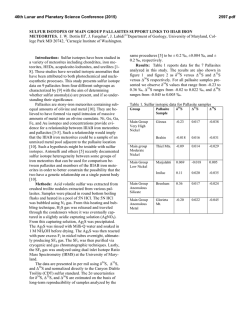
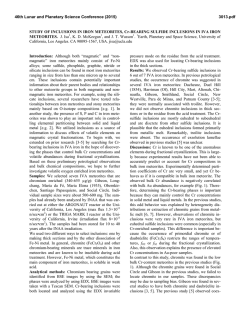
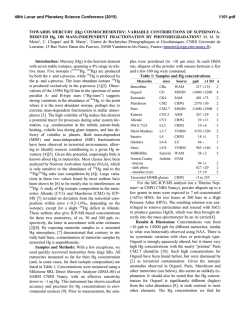
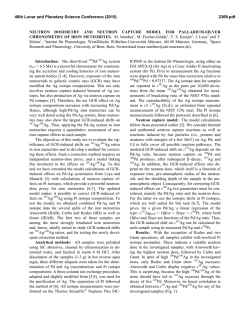
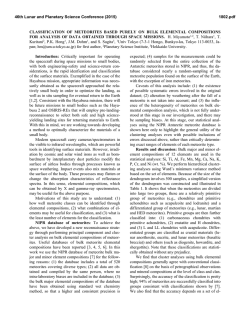
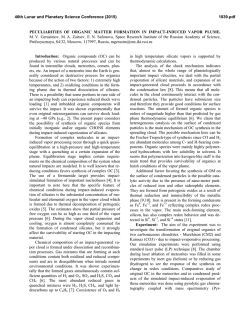
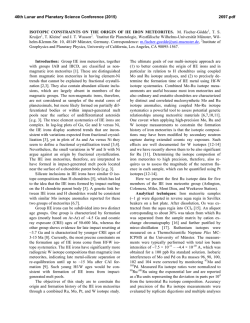

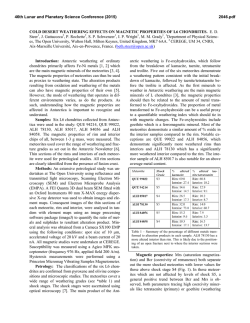
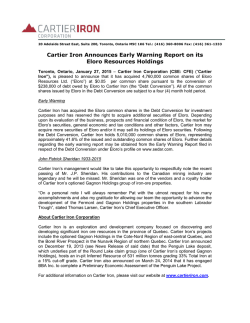
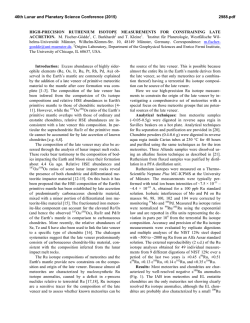
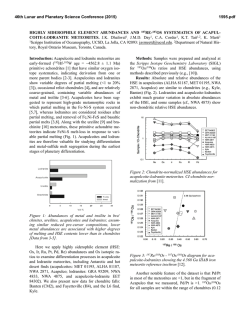
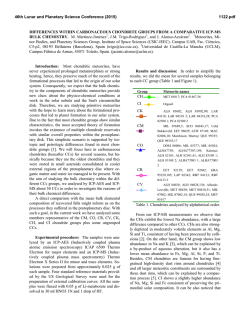

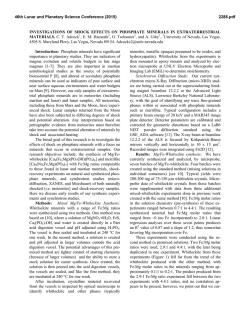
![Download [ PDF ] - Journal of Evolution of Medical and Dental](http://s2.esdocs.com/store/data/000490633_1-79d27cd27762477b75f0b1e9ea895fb0-250x500.png)
